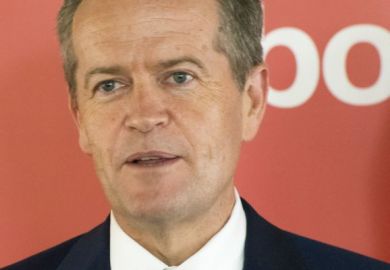The violent world that many old-school queers knew has nearly gone. We now occupy every space and place, physical and metaphorical. We run corporate organisations, teach your kids and operate on your grandparents.
The latest Pride Month is a further illustration of that, with a wide variety of workplaces proclaiming their inclusivity. Universities, as ever, were prominent among them, and this is to be welcomed; advocacy for equity and inclusion helps increase the sense of safety among LGBTIQ+ students and staff.
Indeed, places of education should lead LGBTIQ+ activism because it is their role to disrupt thinking and practices and promote social change. But this isn’t just about noisy and colourful gestures of support for inclusion. It isn’t about tokenistic policies and lip service to queer students’ experience. And it doesn’t begin and end in June.
Acceptance, inclusion and recognition come from being seen and having a voice. They come when those with privilege question their own exclusionary practices, take a step back and really hear and see the ways that institutional policies, practices and structures limit queer personal growth.
We need to refocus on communal approaches. For example, universities should provide space, time and practical resources for staff and students to assemble around matters of inclusion and exclusion in critical and disruptive ways. An example is gender and sexuality alliances (GSAs): groups of LGBTIQ+ students and their allies who come together to promote diversity, equality, acceptance. Such groups also serve as avenues for institutional activities that challenge cisgenderism and heteronormativity – crucial if they are to be embedded in the wider educational environment rather than operating in isolation.
The process starts by building trust. It moves to open discussion of goals, needs and institutional strategic plans and then on to institutional structural and procedural changes. The final step is solidarity – such as a university vice-chancellor leading the annual Pride rally.
Beyond merely promoting visibility and celebrating diversity, educational institutions should proactively promote belonging and inclusion. For example, the operation of all schools and universities across the world must be underpinned by LGBTIQ+-inclusive policies – including in countries where people can be severely punished for same-sex attraction/acts. Moreover, such policies need to be enacted; we only have to look at sexual harassment on campuses to see that discipline around discriminatory behaviour often doesn’t happen even when it specifically contravenes university policy.
Ally training of teaching and leadership staff is also crucial. Further ways to promote allyship include hosting LGBTIQ+-inclusive events; as well as Pride marches, another example is the International Day Against Homophobia, Transphobia and Biphobia on 17 May. Curricula should also be modified to integrate LGBTIQ+-inclusive sex, sexuality, gender education and history. Changes to record keeping should be mandated, such as using preferred names. And campus spaces should be “queered” with LGBTIQ+ symbols.
These small acts, done deliberately and consistently, cultivate a sense of belonging, which is a protective factor for LGBTIQ+ young people against mental health issues and the impact of aggression and peer victimisation. Counsellors can also play a vital role in monitoring mental health, as well as intervening against discrimination. A sense of belonging and well-being enables students to feel welcome to actively contribute to their school environment, facilitating academic engagement and performance.
All this leads to one of the largest topics of current debate: bathroom policy. It seems bizarre to queers to think of a room with one simple function as a site of tension and anxiety. Using whichever bathroom seems appropriate should not be a matter of institutional policy; it should be a human right. Institutions would be well served to think about the issue in this way, and flush away any homo-leso-trans-phobia.
This can be achieved by providing dedicated gender-neutral bathrooms. Other remedies include encouraging the use of non-gendered images to signal where bathrooms are and placing signs and symbols within bathrooms indicating that diverse genders are welcome.
This process of reinstating the primary function of bathrooms in educational institutions starts by acknowledging that bathrooms are places of harmful gender surveillance (whether you are trans or not); consulting with LGBTIQ+ people can make this obvious, so ask us. If we can deal with the bathroom, we can deal with anything.
Such steps will make acceptance, connection and belonging clearly visible. Symbolism and activism go hand in hand, and education can lead the charge in dismantling heteronormative norms. In doing so, they will produce leaders of the future who wear their rainbow and purple hearts on their sleeves – and not only during Pride Month.
Karen Lambert is a senior lecturer in health and physical education at Monash University. She would like to acknowledge the help of Lefteris Patlamazoglou and Asher Cameron.
Register to continue
Why register?
- Registration is free and only takes a moment
- Once registered, you can read 3 articles a month
- Sign up for our newsletter
Subscribe
Or subscribe for unlimited access to:
- Unlimited access to news, views, insights & reviews
- Digital editions
- Digital access to THE’s university and college rankings analysis
Already registered or a current subscriber? Login







